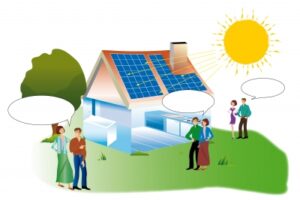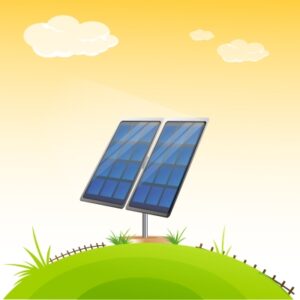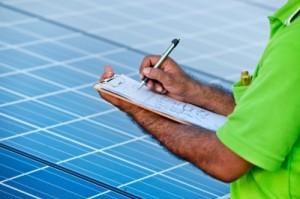 Solar energy is a potential source of free electricity and water heating. It offers the power to enjoy electrical power in remote areas of the world. It seems to offer health and safety along with power, but does it?
Solar energy is a potential source of free electricity and water heating. It offers the power to enjoy electrical power in remote areas of the world. It seems to offer health and safety along with power, but does it?
If you are planning to install solar, you might want to do it soon as the tax credits for solar are being phased out over the next few years.
Solar energy health risks are seldom mentioned. That may be partially due to the limited use of this source of energy. It may also be due to the lack of research in this area. Some have begun to study solar energy health risks, however, and if one researches long enough, a few estimates are available.
Thermal Solar Energy Health Risks
Solar energy health risks are inherent to the design and installation of most thermal energy systems. These are the systems designed to heat water and air for household use.
Solar water heaters complete three basic operations before delivering hot water to your faucet or your heating unit:
1. collect sunlight and convert it into heat energy.
2. circulate fluids that transfer the heat energy to a storage unit
3. store the hot water until you need it
The solar energy health risks with such a system usually occur in the storage units. Some units allow for the growth of allergenic molds and fungi.
If proper materials are used for the storage unit, however, these solar energy systems present few, if any, health risks. Their advantages are that they are far safer than most fossil fuels or nuclear power – they have no emissions and do not pollute the air.
PV Panel Solar Energy Health Risks
The solar energy health risks associated with photovoltaic (PV) panels occurs before the panels are put into use on the consumer’s home. PV panels are the panels used to collect solar energy from sunlight and convert it into usable electricity.
The manufacture of PV panels requires the use of toxic materials. Silicon dioxide is mined from sand or quartzite and reduced with heat to pure silicon. Materials released during refining are the main health risks. Several steps in forming the photovoltaic cells utilize toxic materials. These are sprayed on the cells, and can readily be inhaled.
It is estimated that solar energy health risks associated with producing PV panels per unit energy may be between 11 and 21 deaths per quadrillion joules of energy produced.
Solar energy health risks from PV panels are very slight once the panels are produced and installed on the consumer’s home. This type of solar energy is known for reliability and low maintenance. The home owner seldom needs to be involved in any repairs, and thereby cuts solar energy health risks.
Passive Solar Energy Health Risks
Passive solar energy provides safety and health. A new building that maximizes this technology can reduce energy costs by nearly one half. How?
1. Warming indoor air in a house through vertical, slanted windows facing the sun. The windows capture maximum solar energy from the sunlight.
2. Collecting solar energy in adobe or stone walls and floors, and then releasing it into the air as the temperature falls.
3. Collecting solar energy in a sun space, much like a greenhouse built on the sunny side of the home. This heat is sent into the home with proper ventilation.
4. Holding water in black roof tanks until needed, cutting the working time of the home’s hot water heater.
5. Using clerestories – rows of windows near roof peaks that catch sunlight and bounce it through the building. The sunlight reduces the need for electric lights.
In Summary
Solar energy technologies present few, if any, health risks for the end user. Their use can reduce the health risks presented by other energy sources, providing cleaner, safer, more cost effective energy.
 Fun facts about solar power are popular at any age. People want serious information about solar power, but sometimes, even the serious can be expressed in fun facts.
Fun facts about solar power are popular at any age. People want serious information about solar power, but sometimes, even the serious can be expressed in fun facts. Most power plants in the United States and all over world are using fossil fuels to operate and generate electricity. Fossil fuel has been used as an energy source as long as man has learned to generate power. Fossil fuel has been around for ages and when man started using this energy sources no one though about the consequences. Fossil fuels will run out and there will be a shortage of it in near future. This shortage in fossil fuel will have its affect on our daily live and various industries. Today we see some of these affects already, fossil fuel prizes are raising and electricity is becoming more expensive. Although fossil fuels are more scares, to need for fossil fuels will still be here and will not decrease in near future. To solve this shortage of fossil fuels we will need to look for other possibilities for our energy demand.
Most power plants in the United States and all over world are using fossil fuels to operate and generate electricity. Fossil fuel has been used as an energy source as long as man has learned to generate power. Fossil fuel has been around for ages and when man started using this energy sources no one though about the consequences. Fossil fuels will run out and there will be a shortage of it in near future. This shortage in fossil fuel will have its affect on our daily live and various industries. Today we see some of these affects already, fossil fuel prizes are raising and electricity is becoming more expensive. Although fossil fuels are more scares, to need for fossil fuels will still be here and will not decrease in near future. To solve this shortage of fossil fuels we will need to look for other possibilities for our energy demand. The most exact definition of Solar Energy is plainly – “the energy from the sun”. It is a term used to classify the electromagnetic radiation emitted by the sun and intercepted by the Earth. It is the world’s most permanent and reliable source of energy and the most copious.
The most exact definition of Solar Energy is plainly – “the energy from the sun”. It is a term used to classify the electromagnetic radiation emitted by the sun and intercepted by the Earth. It is the world’s most permanent and reliable source of energy and the most copious.